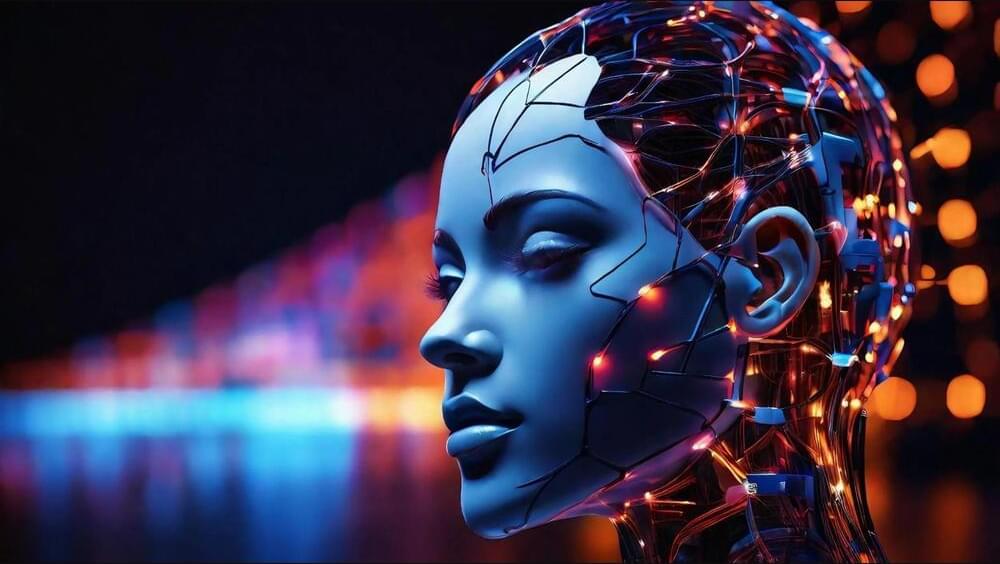More than paying lip service, the cells may offer new opportunities to research and treat various lip conditions.



Researchers at Cornell have engineered a groundbreaking porous crystal using a unique fusion of macrocycle and molecular cage structures, enhancing lithium-ion transport in solid-state batteries.
This new crystal design features one-dimensional nanochannels that significantly increase ion conductivity, a development that promises safer batteries and has potential applications in water purification and bioelectronics.
By fusing two contorted molecular structures, Cornell researchers have developed a porous crystal capable of absorbing lithium-ion electrolytes and smoothly transporting them through one-dimensional nanochannels. This innovative design has the potential to enhance the safety of solid-state lithium-ion batteries.



Optical computing aims to replace electricity with light to achieve faster, energy-saving computing.
Researchers have now developed an optical programmable logic array (PLA) that overcomes key hurdles, running advanced logic operations like Conway’s Game of Life. This breakthrough showcases optical computing’s future potential.
For years, researchers have explored ways to use light for computing, seeking faster speeds and reduced energy consumption compared to conventional electronic systems. Optical computing, which relies on light instead of electricity for calculations, offers promising advantages like high parallelism and efficiency. However, implementing complex logic functions with light has been challenging, limiting its practical applications.

In a new study, an international team of physicists has unified two distinct descriptions of atomic nuclei, taking a major step forward in our understanding of nuclear structure and strong interactions. For the first time, the particle physics perspective – where nuclei are seen as made up of quarks and gluons – has been combined with the traditional nuclear physics view that treats nuclei as collections of interacting nucleons (protons and neutrons). This innovative hybrid approach provides fresh insights into short-range correlated (SRC) nucleon pairs – which are fleeting interactions where two nucleons come exceptionally close and engage in strong interactions for mere femtoseconds. Although these interactions play a crucial role in the structure of nuclei, they have been notoriously difficult to describe theoretically.
\r \r.
“Nuclei (such as gold and lead) are not just a ‘bag of non-interacting protons and neutrons’,” explains Fredrick Olness at Southern Methodist University in the US, who is part of the international team. “When we put 208 protons and neutrons together to make a lead nucleus, they interact via the strong interaction force with their nearest neighbours; specifically, those neighbours within a ‘short range.’ These short-range interactions/correlations modify the composition of the nucleus and are a manifestation of the strong interaction force. An improved understanding of these correlations can provide new insights into both the properties of nuclei and the strong interaction force.”


Anirban Datta, Head of Discovery Biology at Verseon International Corporation, details how recent breakthroughs are bringing once-distant possibilities, such as testing drugs more efficiently and restoring lost organ function through implantation, closer to reality.
Imagine being able to create an in vitro replica of a diseased organ to study the molecular mechanism underlying the illness. Now take a step further: envision testing drugs in these organoids to identify the ones that can treat disease safely and effectively without needing to run expensive clinical trials first. Further still, think about implanting these mini organs into the patient to restore lost function. With multiple breakthroughs in recent decades, these goals are now much closer to reality.

👁️🔍 Scientists have developed a transparent camera using see-through technology, paving the way for hidden eye tracking devices in everyday objects. #InvisibleInnovation
The problem is that placing a camera in front of the eyes tends to block the view. And mounting them further away makes them less accurate, more bulky and often more power hungry because of the extra data processing they require. This has limited their utility in many situations.
What eye trackers need is a way of hiding light sensitive pixels in plain sight.
Enter Gabriel Mercier at The Barcelona Institute of Science and Technology in Spain and colleagues who have built transparent photodetectors that can make cameras more or less invisible. They have tested their device and shown it could enable a new generation of eye tracking devices built into ordinary objects such as spectacle lenses, computer monitors and windows. “The operation and appearance of transparent image sensors present a fundamental shift in how we think about cameras and imaging, as these devices can be concealed in plain sight,” they say.

Researchers have developed a cutting-edge optical computing system that represents a major leap in the field of optical logic.
Traditionally, optical logic computing—using light to perform logical operations—has faced challenges when trying to handle more than four inputs due to limitations in…
Researchers have long sought to harness the power of light for computing, aiming to achieve higher speeds and lower energy consumption compared to traditional electronic systems. Optical computing, which uses light instead of electricity to perform calculations, promises significant advantages, including high parallelism and efficiency. However, implementing complex logic operations optically has been a challenge, limiting the practical applications of optical computing.
A recent breakthrough by researchers at Huazhong University of Science and Technology and the Wuhan National Laboratory for Optoelectronics has pushed the boundaries of optical computing. As reported in Advanced Photonics, they developed a large-scale optical programmable logic array (PLA) capable of handling more complex computations. This new optical PLA uses parallel spectrum modulation to achieve an 8-input system, significantly expanding the capabilities of optical logic operations.
The researchers demonstrated the potential of their optical PLA by successfully running Conway’s Game of Life, a well-known two-dimensional cellular automaton. This achievement marks the first time such a complex model has been executed on an optical platform without relying on electronic components for nonlinear computing.